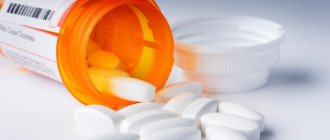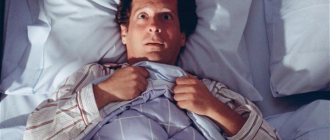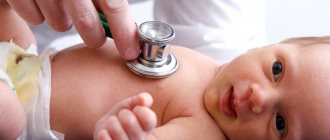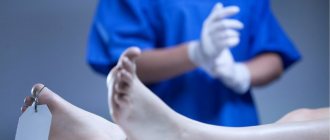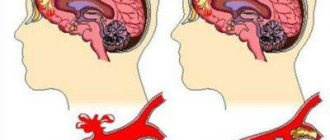First aid: basic rules
In case of a concussion, both children and adults receive first aid according to the same algorithm.
We must remember: the main task of those who decide to help the victims is to call an ambulance as soon as possible and not to harm the patient in any way before it arrives. Due to the low awareness of the population about how to properly help victims, the situation of patients is often only worsened by the actions of those “helping” .
Classification and severity
Concussions are generally divided into three degrees of severity. They depend on the symptoms that the patient has.
Classification of concussion by increasing severity:
- Mild degree. The victim may experience a mild headache, dizziness, and in some cases nausea and fever. In general, his condition does not cause concern, since there is no threat to life and health. With a mild concussion, the patient’s condition is restored within 20-30 minutes;
- Average degree. With it, nausea, headache and disorientation in space occur in the vast majority of cases. Moreover, post-traumatic short-term amnesia may occur. Normalization of the victim’s condition lasts more than 30 minutes;
- Severe degree. This is the most dangerous case in which a person experiences loss of consciousness and retrograde amnesia. Despite the fact that consciousness returns to the victim within a few minutes or hours, unpleasant symptoms in the form of poor health, nausea, disorientation, loss of appetite continue to accompany him for up to two weeks.
Regardless of the severity of a concussion, first aid is necessary.
What should you do if you lose consciousness?
- It is highly advisable to bring the victim to consciousness, because otherwise, he may choke on vomit or blood (if he has an open wound). You can bring yourself back to health using a cotton swab soaked in ammonia.
- If it is not possible to regain consciousness, the patient must be carefully, without sudden movements, placed on a hard horizontal surface, and then turned onto his right side.
- The victim’s hands should be in front of him and his knees bent - this will ensure better access to oxygen and minimize the risk of suffocation from vomit.
- Moreover, it is advisable to open the window, unbutton the patient’s shirt and perform other actions that provide him with a flow of fresh air.
Reference! You can apply a towel soaked in cold water to the victim's head.
Nuances of rehabilitation at home
If hospitalization is not required and the patient remains to recover at home, he should adhere to certain rules that will help the body recover faster. Here's what they mean:
- Bed rest. The victim should remain as calm as possible for several days. The worst decision would be to go straight to work. Even if there are no negative symptoms and the body’s condition is quite satisfactory, it is still worth taking sick leave for at least a couple of days;
- Refusal to watch TV and use a computer and smartphone. If this is not possible, then you should at least minimize the time devoted to these gadgets;
- Moderate reading of books. Straining your eyes for a long time is not recommended during the rehabilitation period;
- Moderate listening to music. You should not use headphones. This can only make the situation worse. But putting on a calm, quiet background melody is a completely reasonable solution;
- Avoiding physical overload. Heavy sports activities will have to be completely canceled for at least 1-2 months;
- Complete nutrition. If there is no gag reflex, you should not refuse food. During the recovery period, the body must receive a full amount of vitamins and other useful substances. It is worth remembering that nutrition should be as healthy and balanced as possible.
Undoubtedly, rehabilitation in each individual case will have its own nuances. It is best not to leave the patient alone for at least 2-3 days after the incident in order to ensure that his condition is stable.
Prohibited actions
- When providing first aid for a concussion, you should never touch, shake or hit the patient’s face . This aggravates the injury and causes damage to the victim.
Do not give water or food to a sick person . This may cause vomiting, which will further worsen the victim's condition.
- Disturbing a person with a suspected concussion is also prohibited . It is necessary to ensure complete silence, absence of bright light and access to fresh air.
- It is strictly forbidden to give any medications to the victim . Prescribe medications only to qualified doctors after examination and diagnosis.
First aid
Place the patient in a horizontal position. When vomiting, prevent vomit from flowing into the respiratory tract. A heating pad with ice or a cooling compress on the head. Wipe the whiskey with ammonia. Bring a cotton swab with ammonia to your nose.
In order to help the victim, you must do the following:
- Cold. A cold compress or frozen food should be applied to the impact site.
- Peace. The injured person should be placed on a bed or on a bench (if everything happens on the street), raise his head just a little and provide the patient with fresh air.
- Eliminate food. It is better not to eat food in the first hours after injury. You shouldn't drink a lot of liquid either. If a person is thirsty, you can give him warm sweet tea.
But for an accurate diagnosis, of course, you should go to the hospital. Usually the doctor orders an x-ray, on the basis of which he can make a conclusion.
Treatment for such an injury varies depending on its severity. Moderate and severe forms are treated in hospital with medications. Mild forms are usually treated at home.
How to treat a mild concussion:
- Bed rest. The first time after the blow you need to lie down. About a week is enough, but you need to look at the well-being of the victim.
- Complete peace of mind. You are not allowed to use electronic devices or read anything. The patient needs to organize peace and quiet.
- Painkillers. The doctor must prescribe a medicine that the patient can take in case of headache.
Usually after a week the person’s condition is completely restored. At first, you should avoid physical activity.
What to do if there is no doctor nearby?
- First of all, it is necessary to assess the condition of the victim. If there is no bleeding, vomiting and headaches are not pronounced, you can call an ambulance later, as soon as the opportunity arises. In this case, the patient needs to be provided with maximum rest in accordance with the recommendations that we wrote above.
- However, if a person is bleeding or complains of severe headaches, it is possible to transport him to the hospital by car. To do this: it is necessary to carry the victim to the car so that, if possible, he is not disturbed in any way, ideally there should be a stretcher and rigid fixation;
- In the car itself, the patient’s head must be fixed so that when stopping, turning, etc., the patient’s condition does not worsen.
What is a concussion
A concussion is when the brain hits the inner walls of the skull when the head is hit from outside. The consequences of such impacts are swelling of the brain tissue, disruption of blood flow and internal damage to the brain. Most people think of a concussion as an external injury, but it is actually an internal injury because it affects the brain, located in the head.
This pathology is divided into several types, which are characterized by severity:
- 1st degree – loss of consciousness, which goes away after half an hour.
- 2nd degree - disorientation lasts longer than half an hour after the return of consciousness.
- Stage 3 - after fainting, the patient does not remember what happened.
Important!
It is important to remember that a concussion does not go away without a trace. Such a TBI leaves traces that begin to show themselves in old age in the form of migraines and simple headaches. And if concussions occur frequently, then in the future they provoke Parkinson’s disease, headaches, and memory impairment. Therefore, it is necessary to take such brain injury more seriously.
Standard for first aid for concussion
The procedure for providing medical emergency care, as well as its nature, are determined by the conditions of the scene of the incident, the condition of the victim and the cause of injury. For the most effective measures, it is necessary to accurately establish the circumstances of the injury , as well as the patient’s condition in the first minutes after the injury.
In addition to the standard procedures - loosening the belt, unfastening the collar, bringing the patient into a comfortable lying position - it is necessary to pay attention to the color of the skin, the strength and frequency of the pulse, the temperature and degree of sweating of the patient. Next, the patency of the airways is restored, i.e. mucus, blood and vomit, if present, are removed, as well as foreign elements.
- Artificial respiration is done based on an analysis of the patient's condition. If, nevertheless, a decision is made about the need for this procedure, it is first necessary to remove all foreign bodies, otherwise blockage of the trachea and bronchi is possible. This can be fatal.
- In case of significant bleeding from head wounds, a pressure bandage must be applied as first aid at home, and transportation to the hospital occurs in a position with the head of the head elevated.
Treatment
Treatment of a concussion lasts from 10 days to a month.
- bed rest and long sleep;
- listen to music (but not through headphones), reading is not recommended;
- use sedative folk remedies or light herbal infusions;
- long-term dairy-vegetable diet with limited salt intake.
IT IS FORBIDDEN
- watch TV, videos, play on the computer, Gameboy or Tetris - flashing frames irritate the brain;
- exercise.
The main task in treating a concussion, both at home and in a hospital setting, is rest and bed rest for a period of one and a half weeks to two.
Rest should be not only physical, consisting of minimal physical activity of the victim, but also psycho-emotional (exclude nervous tension, it is not recommended to watch TV, read, listen to music).
Drug treatment for concussion is based on relief of concussion symptoms and includes the following medications:
- Sedatives, the most popular of which are valerian, motherwort, and Corvalol.
- Sleeping pills: donarmil, relaxone, phenobarbital.
- Painkillers are prescribed to relieve headache attacks. For these purposes, analgin, pentalgin, dexalgin are prescribed.
- Drugs that help eliminate dizziness (Betaserc, Vestibo).
- Medicines with a general strengthening effect (complexes of vitamins and minerals, antioxidants and tonics).
A mixture of motherwort, mistletoe, mint and lemon balm. To prepare, you need to take 100 g of dry crushed motherwort, mistletoe and mint plants, add 75 g of lemon balm. Pour the mixture into half liters of boiled water, leave overnight, take 50-100 ml. 3-4 times a day.
Thyme based infusion. To prepare, you need 10 g of herb, pour 300-400 ml. water, bring almost to a boil, then turn off the heat. Let the broth cool, strain and take 100 ml. before meals. This recipe must be consumed for up to six months; it promotes stable functioning of the nervous system.
Alcohol tincture of Aralia. To prepare 10 g of the plant, add 100 ml. alcohol or vodka. Infuse for about 3 weeks, take 30 drops in the morning and at lunchtime. The tincture helps normalize brain function.
St. John's wort decoction. To prepare, pour 2 teaspoons of dry herb into a glass of boiling water, boil for 5 minutes, then cool, strain and consume a third of a glass three times a day.
Symptoms
Children of each age have slightly different symptoms. So in infants it is very difficult to determine the symptoms of a concussion. The most common symptoms after an impact are:
- pale skin;
- vomit;
- regurgitation after eating;
- moodiness;
- sleep disturbance;
- anxiety;
- prolonged crying.
Concussions in older children have the following symptoms:
- dizziness;
- weakness;
- headache;
- bouts of vomiting;
- nausea;
- disorientation in time, space;
- impaired concentration of gaze;
- change in heart rate;
- A brief loss of consciousness may occur.
In some cases, concussion may be diagnosed as post-traumatic blindness. This symptom can appear immediately after injury, or after some time (minutes, hours). After a certain period of time, it disappears on its own.
The effects of the injury often appear within a couple of hours. There is a deterioration in the child's condition. He may be in a semi-fainting state, and attacks of vomiting begin. Emergency medical care for such symptoms is required. For about a month after the injury, the child will experience motion sickness in transport, but over time this symptom will also pass.
The difficulty in determining the presence of injury immediately is that symptoms sometimes appear only after some time. In children and adults, the following minor symptoms may also be present:
- blood flow to the face;
- increased sweating;
- a state of general discomfort.
Traditional medicine recipes to protect your health
Concussion or brain injury, our ancestors will tell you what to do. Since ancient times, effective folk remedies have been known that will come to the aid of TBI. But their use is possible only after a comprehensive diagnosis, as well as with the consent of the attending physician.
The folk recipes listed below can be used during the rehabilitation period:
- Crush mint, mistletoe and medicinal motherwort (100 grams of dry plants each), add 75 grams of tender lemon balm. Pour 0.5 liters of boiling water over the prepared herbs, leave for 8 hours, take 100 ml 4 times a day,
- pharmaceutical valerian - 20 grams, combine with hops, lemon balm, aromatic mint, 10 grams each. 2 tbsp. spoons of the prepared mixture of herbs, pour 0.3 liters of boiling water, leave for ¼ hour. Filter, take the prepared infusion (completely) before bedtime,
- mistletoe - place 40 grams in a metal container, 20 grams each. - yarrow, shepherd's purse, field thyme, horsetail and dubrovnik. Leave for an hour, filter and take small portions throughout the day.
Shepherd's purse can cause bleeding in the uterine cavity, so a woman should completely exclude such a pathology. Otherwise, treatment for TBI can be fatal!
Rehabilitation after injury
Throughout the entire recovery period - from 2 to 5 weeks after the injury (depending on the severity of the pathological condition), the patient must adhere to the recommendations of the attending physician and maintain complete rest. Any mental or physical stress is prohibited.
The victim should be under the supervision of a neurologist for a year, which will prevent the development of severe complications.
It is necessary to realize that after a TBI of any severity, the development of symptoms of a dangerous disease is possible in people who systematically consume alcoholic beverages, including epileptic seizures.
A concussion is a dangerous pathological condition of the brain that can provoke the development of serious illnesses. At the first sign of injury, you should urgently call an ambulance or consult a specialist.
Only a qualified doctor can explain how to treat a concussion in order to prevent the development of a dangerous pathological condition. The lack of adequate, comprehensive therapy can lead to irreversible consequences, especially in the presence of serious and dangerous injuries to humans.


